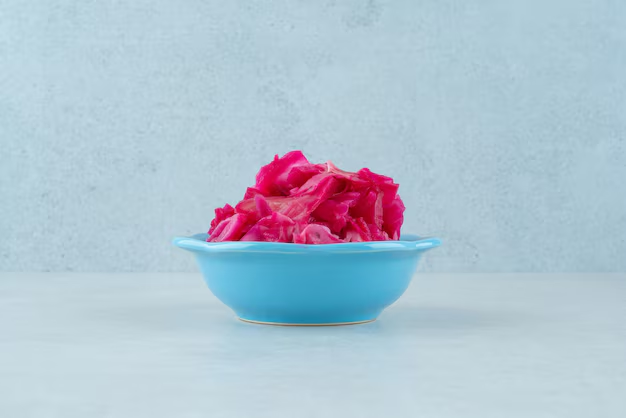The Ultimate Guide: Storing Rhubarb in Your Refrigerator for Optimal Freshness
When it comes to vegetables, rhubarb often takes center stage in the advent of spring, tantalizing taste buds with its unique tartness. However, like many fresh produce items, rhubarb demands careful storage to preserve its nutrition and flavor. Neglecting proper storage methods can quickly turn this prized vegetable from vibrant to withered. But fear not! This guide will walk you through everything you need to know about storing rhubarb in your refrigerator.
🥄 Understanding Rhubarb
What Is Rhubarb?
Before diving into storage methods, let's explore what rhubarb actually is. Rhubarb is a perennial plant often mistaken for a fruit due to its common use in desserts. However, it's actually a vegetable. Known for its stalks, which range from bright red to light green, their tangy flavor makes rhubarb a favorite ingredient in various culinary dishes.
Why Store Rhubarb Correctly?
Extended Freshness: Proper storage not only prolongs the freshness of rhubarb but ensures that you enjoy its unique taste and nutritional benefits for weeks rather than days.
Nutrient Preservation: Rhubarb is packed with vitamin K, fiber, and antioxidants. Storing it correctly helps preserve these essential nutrients.
Reducing Waste: Waste less by storing rhubarb efficiently. Avoid the disappointment of finding spoiled stalks in the crisper drawer.
🌿 Steps to Store Rhubarb in the Refrigerator
1. Selecting the Right Stalks
To start, you want the freshest rhubarb stems. When choosing rhubarb:
- Look for firm and crisp stalks. Flimsy or limp stalks indicate that the rhubarb is past its prime.
- Bright, full-colored stalks signify freshness. There's a slight difference in flavor between red and green stalks, but both are delicious when fresh.
2. Preparation Is Key
Before placing rhubarb in the fridge:
- Trim any leaves: The leaves of rhubarb are toxic if consumed. Therefore, they should be trimmed and discarded before storage.
- Clean the stalks: Gently wash the stalks under cool water to remove any dirt. Pat them dry with a clean towel to prevent mold.
3. Wrapping Rhubarb
The method of wrapping can determine how long your rhubarb stays fresh:
- Use breathable materials: Wrapping stalks in a damp paper towel allows moisture to be retained without suffocation, preventing the stalks from drying out.
- Plastic bags with openings are a good alternative, allowing some air circulation. Avoid sealing the bag tightly.
4. Where to Store
Place the wrapped rhubarb in the crisper drawer of your refrigerator. The crisper provides an ideal environment with higher humidity that helps keep vegetables fresher, longer.
🍽️ Maximizing the Shelf Life of Rhubarb
Avoid Overcrowding
Overcrowding the crisper drawer can lead to uneven airflow, increasing the risk of spoilage. Give each stalk some space.
Monitoring and Maintenance
Regularly check the condition of the stored rhubarb. If you notice any signs of spoilage, such as softness or brown spots, remove the affected stalks to prevent others from going bad.
📊 Quick Tips for Storing Rhubarb
Here’s a quick checklist to ensure you're storing rhubarb correctly:
- 🥬 Choose firm, vivid stalks.
- ✂️ Remove and discard leaves immediately.
- 💧 Rinse and dry the stalks before storing.
- 🛍️ Wrap in a damp paper towel or perforated plastic bag.
- 🌬️ Store in the refrigerator's crisper drawer.
- 🔍 Inspect regularly for spoilage.
❄️ Can You Freeze Rhubarb?
If you find yourself with an abundance of rhubarb, freezing is an excellent option to extend its use beyond the spring and summer months.
How to Freeze Rhubarb
- Cut into pieces: After cleaning, cut the rhubarb into 1-inch sections. This size is versatile for future recipes.
- Blanching: Briefly blanch the rhubarb in boiling water for one minute, then rapidly cool it in an ice bath. This step helps retain color and flavor.
- Flash Freeze: Arrange the pieces in a single layer on a baking sheet and freeze until solid. This prevents them from clumping together.
- Storage Bags: Transfer frozen pieces into airtight freezer bags, removing as much air as possible. Label with the date for easy tracking.
💡 Helpful Tips for Using Stored Rhubarb
Once you've mastered storage, the next step is making the most out of your rhubarb:
- Cooking: Rhubarb pairs beautifully with strawberries, apples, and citrus. Incorporate into pies, jams, or compotes.
- Experimenting: Try using rhubarb in savory dishes or as a condiment.
- Enjoying Fresh: Wash and slice fresh stalks into salads for a unique tangy addition.
🌟 Conclusion: Keeping Rhubarb Fresh and Flavorful
Storing rhubarb properly in your refrigerator is straightforward yet crucial for preserving its quality and extending its shelf life. By selecting fresh stalks, utilizing the correct wrapping techniques, and placing them in an optimal fridge environment, you ensure your rhubarb remains a vibrant addition to your meals.
Moreover, should you find yourself with more rhubarb than you can use at once, freezing provides an excellent alternative to enjoy this delightful plant throughout the year. By integrating these storage methods into your routine, you'll minimize waste, keep your kitchen stocked, and always have the star ingredient ready for your favorite recipes. So, embrace the tartness and versatility of rhubarb, knowing that your storage practices will keep it fresher for longer. 🍃
